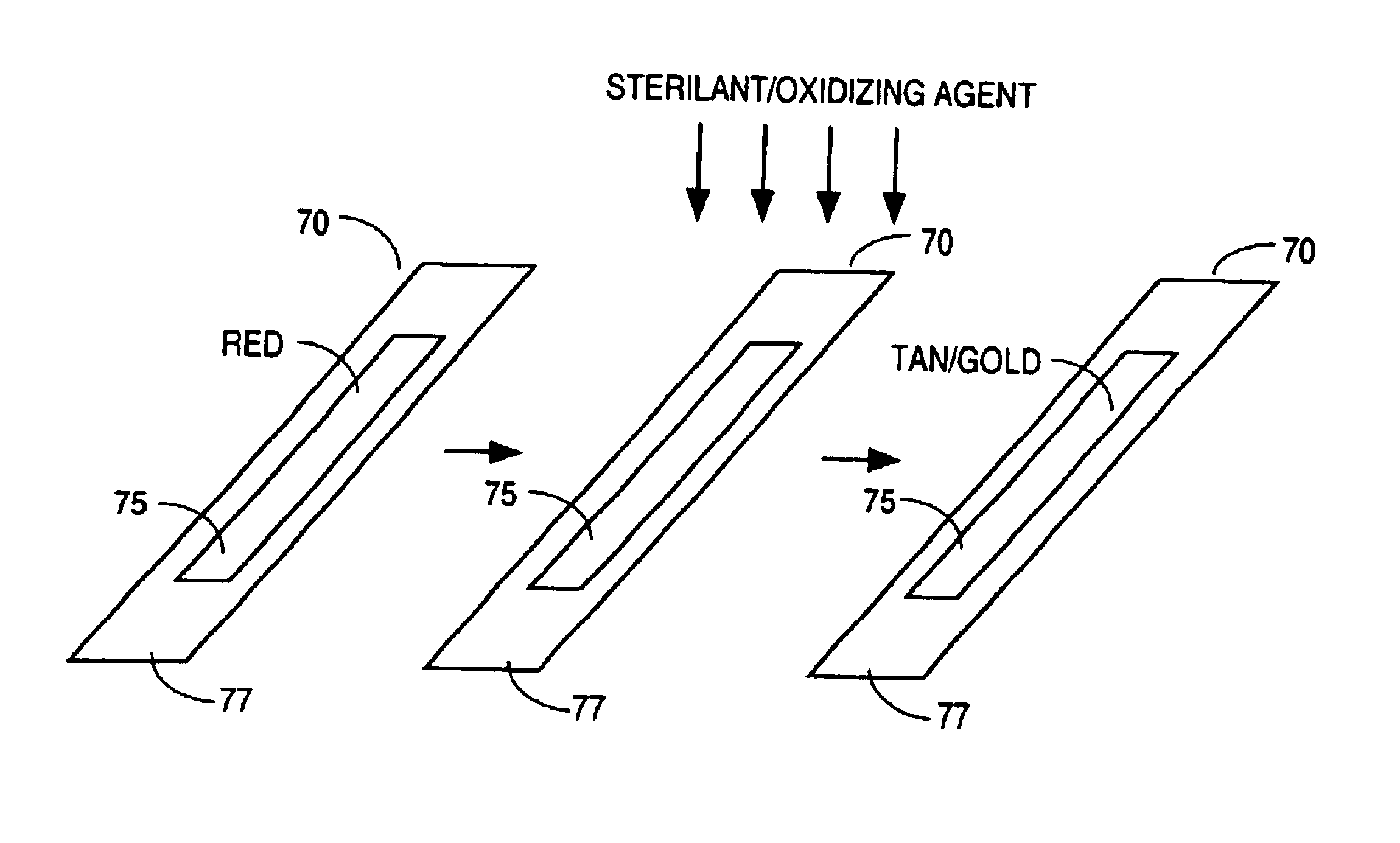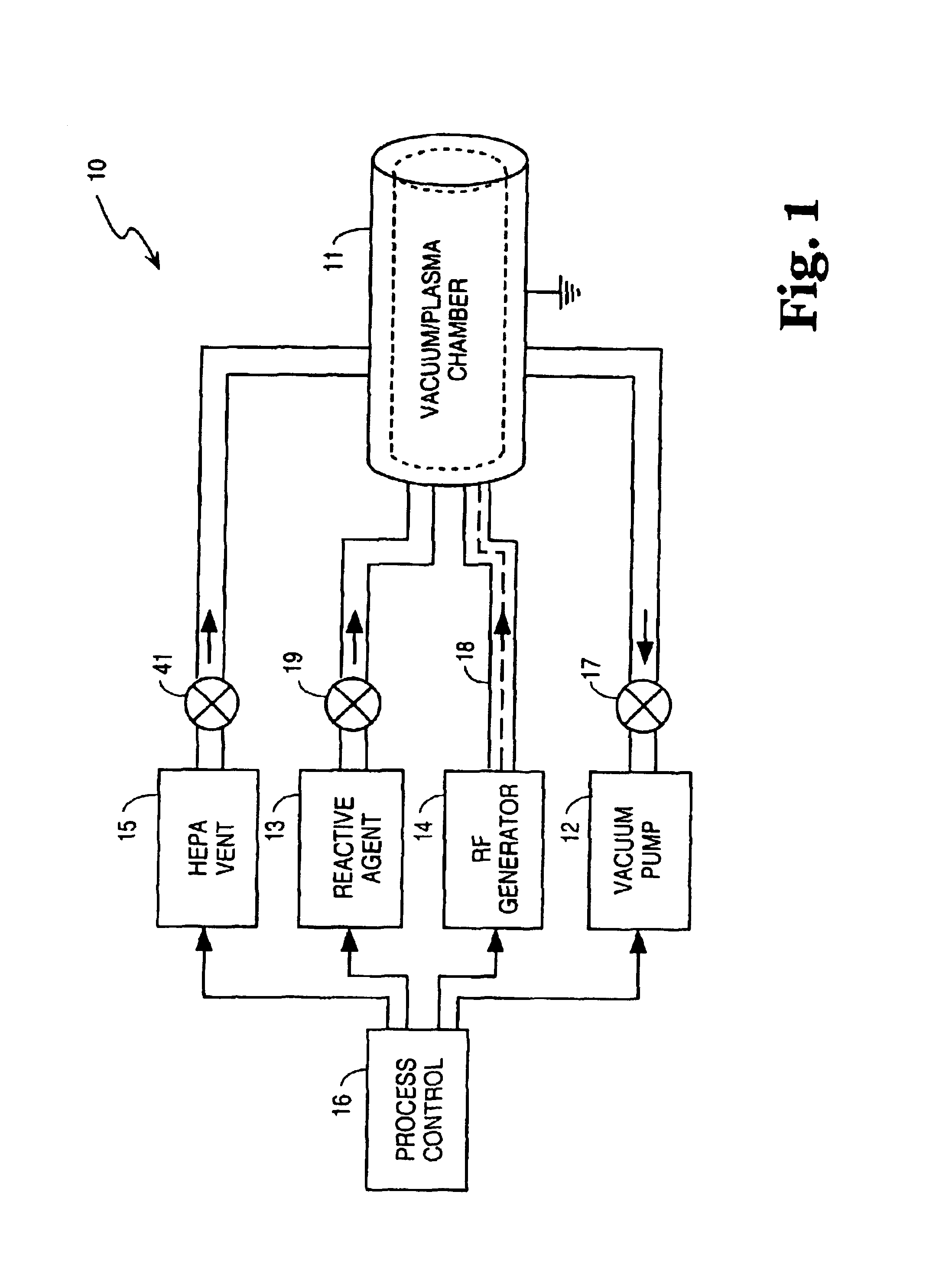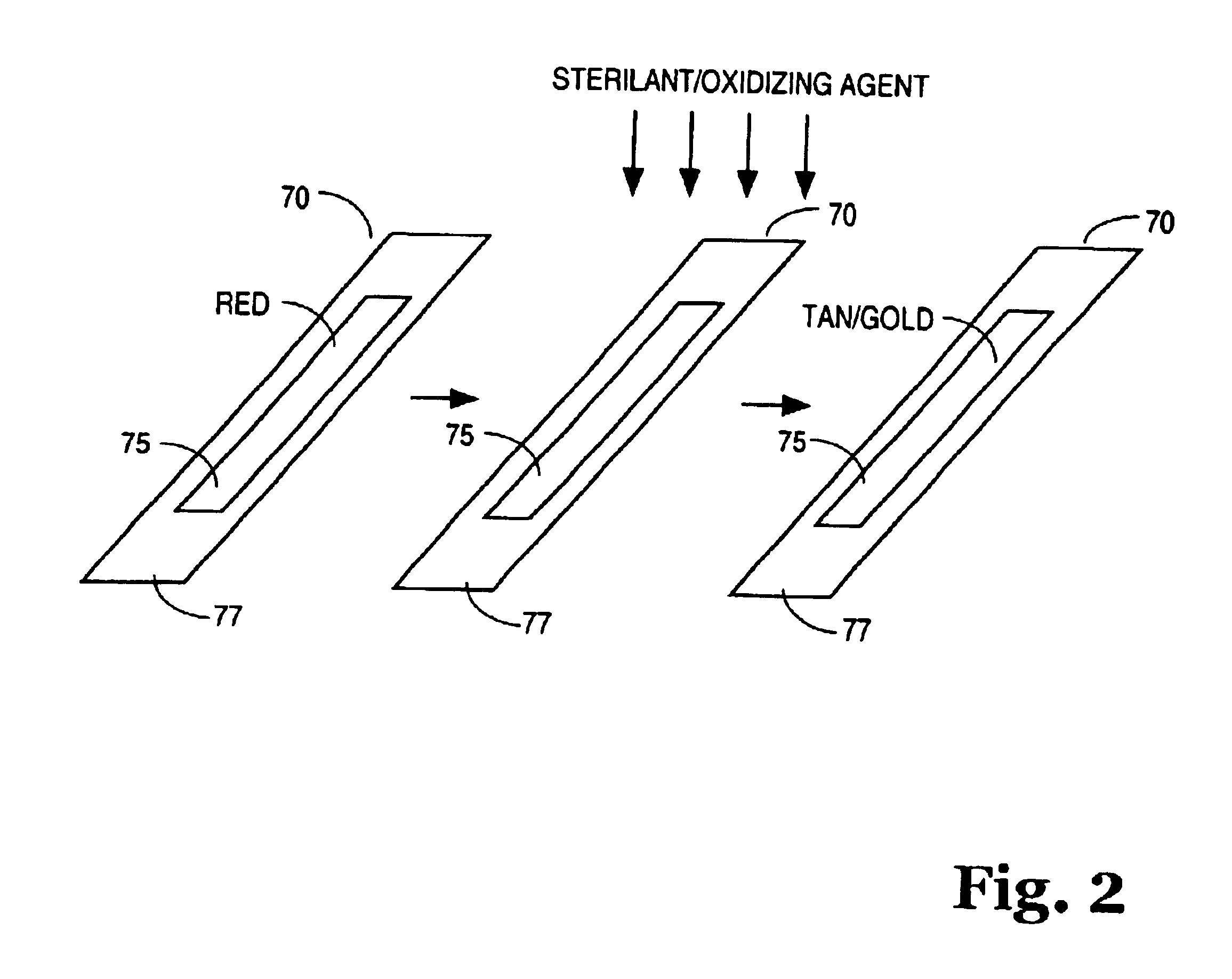Chemical indicator
- Summary
- Abstract
- Description
- Claims
- Application Information
AI Technical Summary
Benefits of technology
Problems solved by technology
Method used
Image
Examples
example 1
[0059]In one example, a screen printing ink was prepared by mixing 5.0 grams aurintricarboxylic acid, triammonium salt with 12.5 grams deionized water (aqueous solvent), and 32.8 grams metallic binder LNG™. The resulting mixture was screen printed on polystyrene, spun-bound polyethylene, and polyester substrates, respectively. The printed ink was red in color. Upon sterilization in a STERRAD® 100 hydrogen peroxide gas plasma type sterilizer (and exposed to a hydrogen peroxide sterilizing agent), the printed ink of the chemical indicator turned from a red color to a tan / gold color. Processed samples (i.e., samples exposed to a sterilizing agent) show no sensitivity to acids or bases.
[0060]The above example demonstrates that the chemical indicator of the invention when exposed to an oxidizing agent will change from a red color to a tan / gold color. The above example also demonstrates that once processed, the change is generally not reversible. In other words, the processed chemical ind...
example 2
[0061]In another example, a flexographic ink was prepared by mixing 14.3307 g aurincarboxylic acid, triammonium salt with 66.3399 g Versamid™ 744 (binder) and 120.3491 g 2-propanol (organic solvent) in a blender. The resulting mixture was printed with a flexographic hand proofer on polystyrene, spun-bound polyethylene, and latex-impregnated crepe paper substrates. The printed ink was red in color. The samples were placed in a STERRAD® 100 hydrogen peroxide gas plasma type sterilizer and exposed to 1440 microliters hydrogen peroxide for ten minutes and without plasma at the end of the cycle. The printed ink of the chemical indicator turned from a red color to a tan / gold color, demonstrating that the chemical indicator of the invention will change when exposed to an oxidizing agent and does not require the presence of plasma to effect a color change.
example 3
[0062]In a third example, approximately 20 mg each of the following aurin moieties were weighed:
[0063]Aurintricarboxylic acid triammonium salt (Aluminon)
[0064]Aurintricarboxylic acid trisodium salt
[0065]The aurin moieties were placed into separate 4 in.×10 in. TYVEK® pouches. The pouches were heat-sealed and the color of the aurin moieties was recorded using a PANTONE™ color chart. The pouches were placed inside an empty tray and the tray was placed on the top shelf of the STERRAD 100® sterilizer. The load was processed at half cycle using 1140 μl 59% nominal hydrogen peroxide. Upon completion of the cycle, the pouches were removed from the chamber and the color of the post-processed aurin moiety was recorded using the PANTONE™ color chart.
[0066]Results:
[0067]
Post-DistinctPre-ProcessedProcessedColorSolid Aurin MoietyColorColorChangeAurintricarboxylic triammoniumRedBrownYessalt (Aluminon)1807C1615CAurintricarboxylic acid trisodiumRedTanYessalt216U1395C
[0068]The two aurintricarboxylic...
PUM
 Login to View More
Login to View More Abstract
Description
Claims
Application Information
 Login to View More
Login to View More - R&D
- Intellectual Property
- Life Sciences
- Materials
- Tech Scout
- Unparalleled Data Quality
- Higher Quality Content
- 60% Fewer Hallucinations
Browse by: Latest US Patents, China's latest patents, Technical Efficacy Thesaurus, Application Domain, Technology Topic, Popular Technical Reports.
© 2025 PatSnap. All rights reserved.Legal|Privacy policy|Modern Slavery Act Transparency Statement|Sitemap|About US| Contact US: help@patsnap.com



